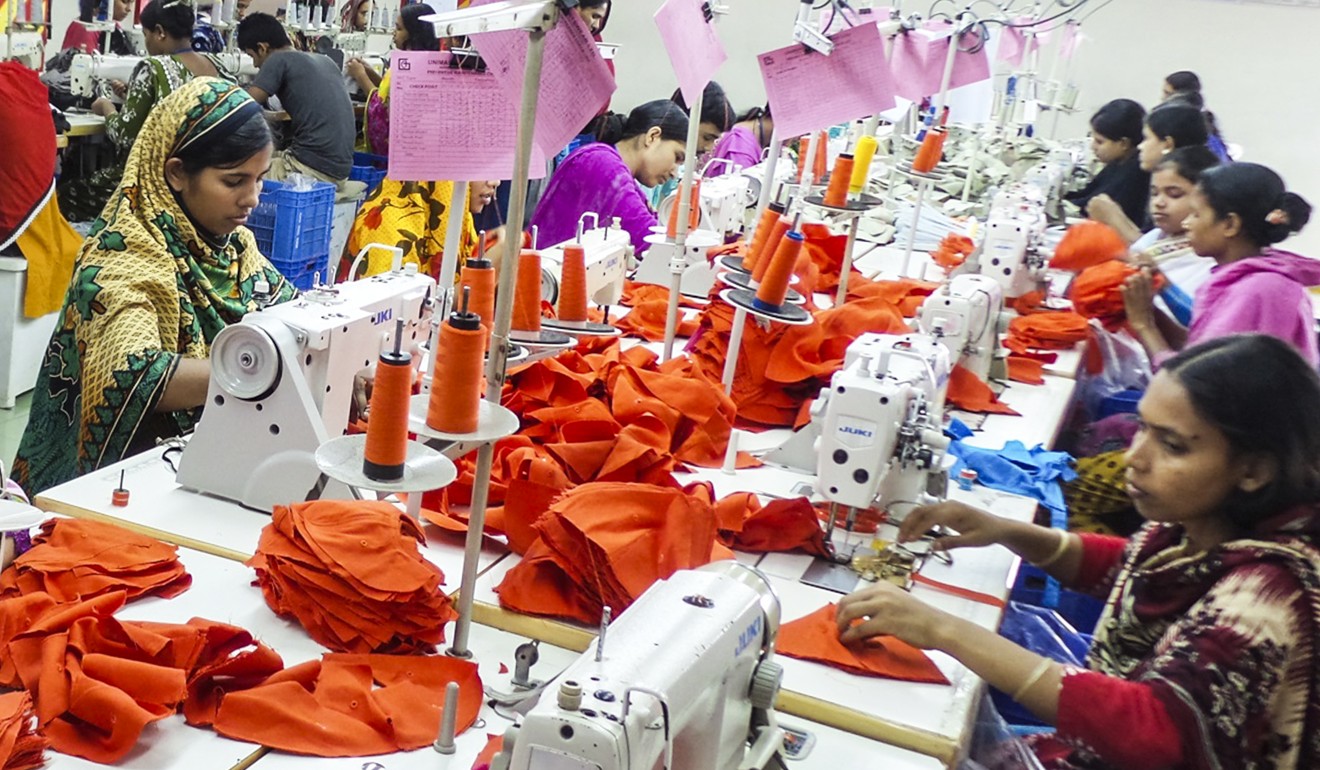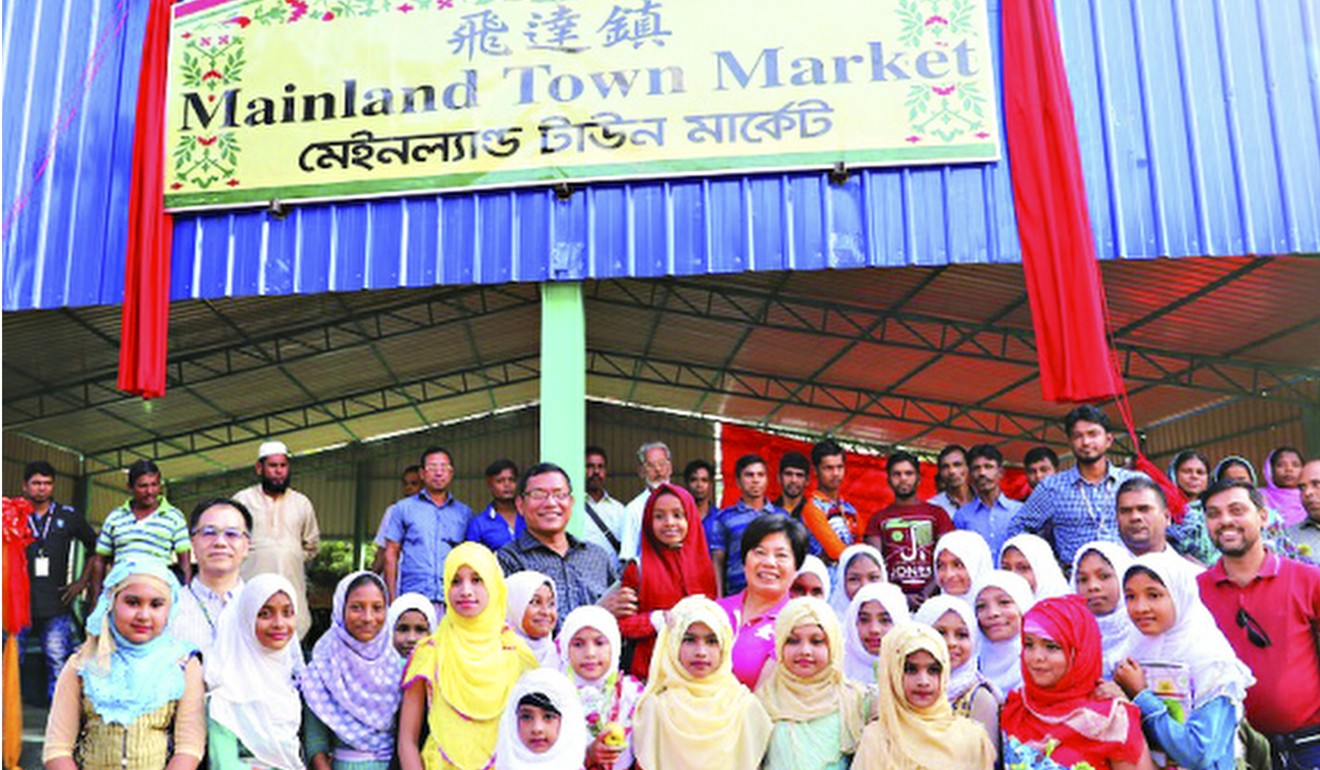
In crossfire of US-China trade war, Hong Kong headgear company finds safe haven in Bangladesh factory
Relocating production elsewhere could be a solution as tariff row escalates between two superpowers, but for those who have not done so, the process would take years
When Hong Kong entrepreneur Pauline Ngan Po-ling relocated a factory from Shenzhen to a remote Bangladeshi village in a hostile environment five years ago, she did not realise it was actually a blessing in disguise.
Ngan, deputy chairwoman of Mainland Headwear Holdings, started her business from scratch in an obscure area in Dhaka, where trails had to be created for access, drinking water came from wells dug by workers and commute was done on ox-drawn carts.
She brought in canned food and instant noodles from Hong Kong for her managers stationed at the site, where she also set up her own Wi-fi network.

While her most expensive products and R&D unit are still based in Shenzhen, the factory in Bangladesh has since expanded to 4,000 workers producing 3 million hats a month.
Despite the progress, Ngan is staying on her toes and has decided to further strengthen her Bangladesh factory strength to 6,000, with an output of 4 million hats monthly, by the middle of next year amid the ongoing US-China trade war.
How will Hong Kong be affected by the US-China trade war?
“Many people told me recently I was lucky in expanding to Bangladesh. But if I’m really lucky, I would have retired. Now I have to deal with another challenge,” Ngan, 58, said. “I fear many factories in mainland China will be in hot water.”

Ngan is among Hong Kong factory owners across the border who are caught in the crossfire of the US-China trade war, with US President Donald Trump imposing tariffs on US$200 billion of Chinese products. Tariff rates of 10 per cent will kick in on Monday, and are set to rise to 25 per cent by January 1, 2019.
China tells journalists: don’t mention the trade war
This is on top of two previous waves of tariffs, at 25 per cent, on a total of US$50 billion worth of Chinese goods. In a tit-for-tat move, China’s Ministry of Finance said a 5 to 10 per cent levy would be imposed on US$60 billion worth of American goods.
The early days in Bangladesh were a difficult mission ... There was virtually nothing there
Hats are among a list of 5,745 products that are subject to the 10 per cent tariffs by the US, which also cover seafood, vegetables, nuts, fruits, grains, jam, peanut butter, tobacco, chemicals, car parts, textiles and garments, vehicles, batteries and furniture.
For example, Mainland Headwear’s hats or caps from its Shenzhen production base will be subject to a total tax of 17 per cent, after the inclusion of an existing 7 per cent tax. The rates will rise to 32 per cent on January 1.
“How can anyone cover this 32 per cent tax?” Ngan said, adding that the company’s clients, who were supposed to bear the tariffs, demanded she shared part of it.
About half of the hats or caps produced in Ngan’s Shenzhen factory are shipped to the US. The factory’s production accounted for a third of the company’s total output, with the rest from Bangladesh. The US market accounted for 69.5 per cent of the company’s HK$445 million turnover in the first half of the year.
For Ngan, the trade war means her base in Bangladesh will play a bigger role.
“The early days in Bangladesh were a difficult mission – my management staff and I ate olives and dried vegetables,” she said. “When we got there, our transport was on ox carts, and our drinking water came from wells we dug, with electricity from our own generators. There was virtually nothing there.”
Hong Kong Productivity Council chairman Willy Lin Sun-mo said relocating factories outside mainland China was a medium- to long-term solution.
“The process takes at least three or four years,” he said.
US-China trade war a ‘dark cloud’ over Hong Kong economic growth
On August 1, the council launched a fund to help Hong Kong companies tap into the markets of the 10-member Asean bloc, with HK$1 million granted per project.
The Hong Kong Trade Development Council, a statutory body, said companies could request for an exemption on tariffs from the Office of the US Trade Representative, the American government agency responsible for recommending trade policy to the president.
As of the end of August, there were 1,100 requests filed, but no exemptions had been granted, it said.
According to latest estimates from the Federation of Hong Kong Industries, a business organisation for local firms, there were 32,000 Hong Kong-owned factories operating in the Pearl River Delta region in 2013.

